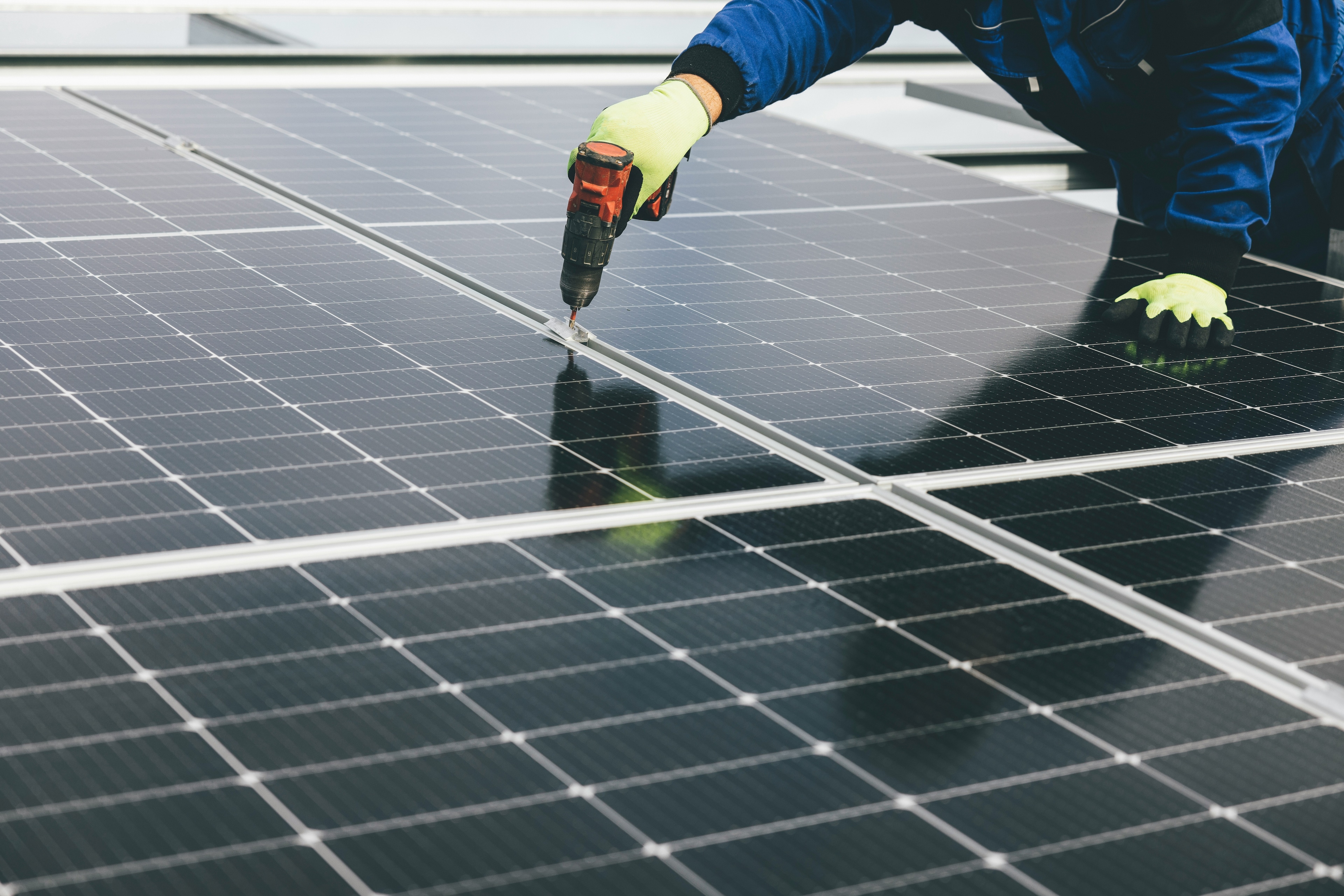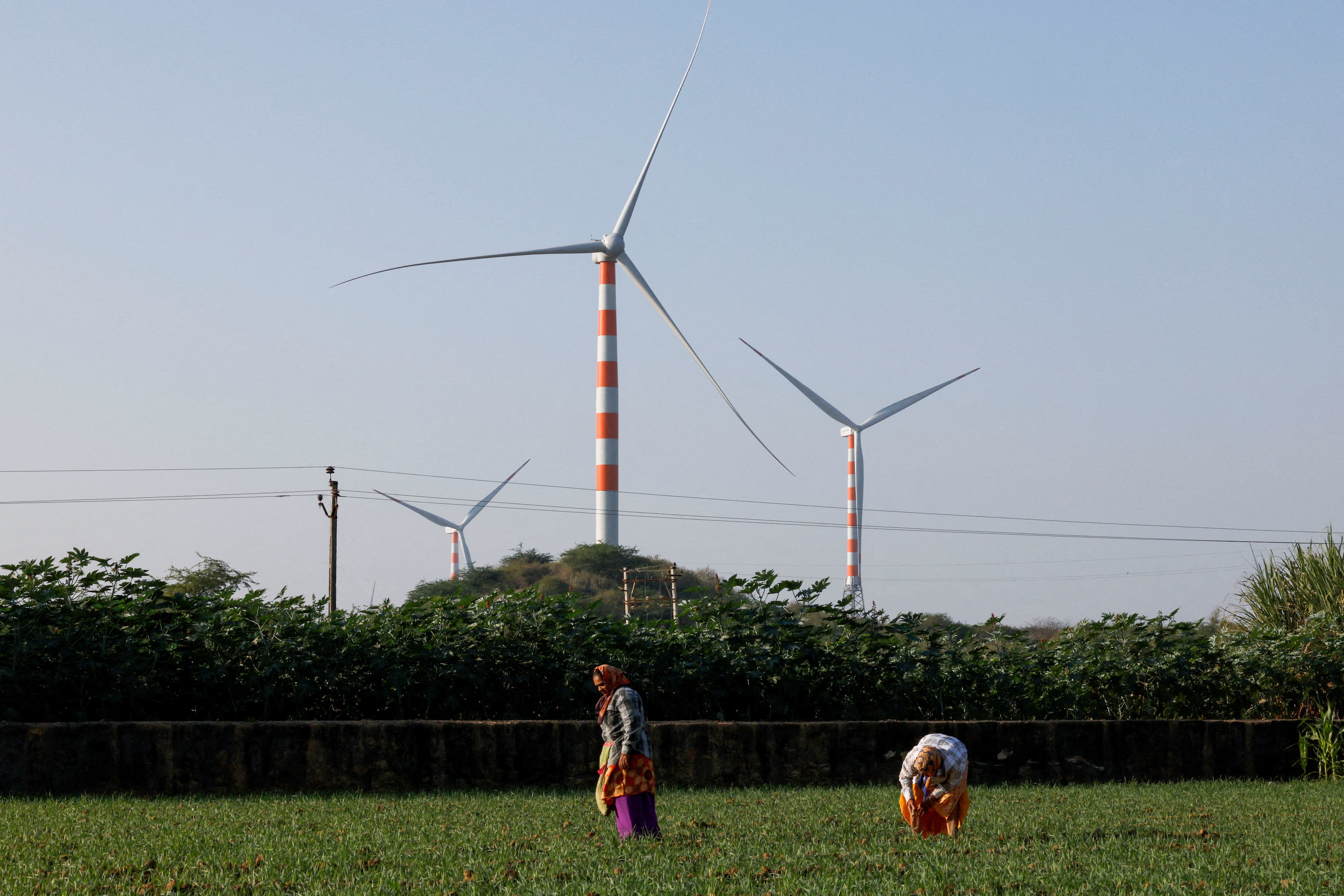How China is advancing clean power policy to support decarbonization of its industrial sectors

China's clean power ambitions are set to transform its industrial sector.
Image: iStockphoto/Petmal
Stay up to date:
SDG 07: Affordable and Clean Energy
- China's industrial carbon emissions are expected to peak by 2030 and then the sector must accelerate decarbonization to meet China's carbon neutrality target.
- Policy-makers and market players must explore ways to enhance market mechanisms and scale up industrial energy storage applications to encourage green power procurement and onsite generation.
- A new white paper, Clean Power for Industry in China: Policy Enablers for the Industrial Sector, offers 10 policy options to support the development of these levers.
China, the world's second-largest economy, is undertaking significant measures to steer its industrial sectors towards sustainable development as global concern about climate change intensifies.
These sectors – including energy-intensive industries like chemicals, steel, ammonia and cement, and less energy-intensive industries such as machinery, mining and textiles – are critical pillars of economic growth. But they also accounted for a third of China's total carbon emissions in 2020. To achieve carbon neutrality, China must accelerate industrial decarbonization after 2030, when emissions are expected to peak. Pledges announced by China to date could encourage a 95% decrease from 2020 levels by 2060.
Accept our marketing cookies to access this content.
These cookies are currently disabled in your browser.
In recent years, the Chinese government has made substantial progress in promoting clean energy transformation within the industrial sectors. Clear policies and support have laid the foundation for sustainable industrial development and motivated businesses to adopt clean energy practices.
"China's industrial green development is primarily driven by the dual-carbon goals, with new industrialization as a key strategy," says Liu Wenqiang, Party Secretary and Vice President of the China Centre for Information Industry Development and Director of the Research Center for Carbon Peak and Carbon Neutrality in Industry and Information Technology. "Refining industrial green policies has significantly advanced industrial upgrades, reduced carbon emissions, promoted circular resource use and enhanced the sustainability of product and equipment supply."
China is gradually building an enabling environment to support the clean energy transition in its industrial sectors. It is laying a robust foundation for achieving its carbon peak and neutrality goals by focusing on two key levers:
1. Scaling up green electricity consumption
Expanding green power consumption is vital for low-carbon development in the industrial sectors. By procuring off-site green power, businesses can reduce energy costs and carbon emissions. Key measures include:
- Increasing green power consumption by promoting green power and Green Electricity Certificate (GEC) trading markets, enhancing power market activity.
- Establishing interconnected mechanisms for power, carbon emissions and GECs to stimulate market participation and facilitate green power transactions.
- Setting up a national coordination body to address and mitigate inter-provincial trading barriers and optimize nationwide power resource allocation.
- Implementing a transparent and reasonable transmission pricing system to enhance cross-regional power resource allocation and trading efficiency.
- Developing long-term, flexible power purchase agreements to meet the diverse green power needs of businesses.
"Promoting green power consumption has become a global consensus in addressing climate change and a key measure for industrial businesses to achieve carbon neutrality,” says Wen Shugang, chairman of power generator China Huaneng Group, which provided 15% of China's green power in 2023. "Huaneng is driving the high-quality development of the new energy sector, providing robust support for the industrial transition and contributing substantial green energy to economic and social development."
2. Upgrading industrial energy storage
The advancement of industrial energy storage deployment is another critical factor driving the transition to clean power. These systems address the intermittency of onsite renewable energy and improve grid reliability and stability. Key measures include:
- Coordinating national industrial energy storage installation plans to streamline the development and operation of storage projects and prevent resource wastage.
- Encouraging innovative business models and supporting policies to protect stakeholder interests and ensure the sustainable growth of the energy storage sector.
- Accelerating electricity spot market integration to explore and diversify revenue streams for energy storage facilities.
- Broadening the scope of the ancillary services that energy storage can provide, such as frequency regulation and peak shaving, to maximize utilization and economic returns.
- Exploring direct transaction models between storage systems and end users to reduce costs and increase energy efficiency.
Chemicals company BASF launched its first power storage facility on a production site in China at the end of 2022. The facility comprises four battery energy storage systems and one AC/DC inverter system. It is used to stabilize grid operations and ensure reliable power supply onsite. It also optimizes the energy mix by shifting and storing renewable energy to balance supply and demand.
"Energy storage technologies are of great importance to building green energy systems," says Jan Peter Bredehoeft, Senior Vice President, Operations and Site Management, BASF Greater China. "This power storage station will further unlock the potential of renewable energy and drive BASF's sustainable production in China, contributing to our customers' green transformation and China's dual carbon goals."
Modernizing China’s energy consumption
The Modernizing Energy Consumption initiative, coordinated by the World Economic Forum in collaboration with Accenture, aims to identify pathways to modernize industrial energy consumption through innovative energy procurement methods, electrification, enhanced efficiency and process transparency.
Its new white paper, Clean Power for Industry in China: Policy Enablers for the Industrial Sector, explores 10 policy options to promote green power procurement and clean power generation. These policy options would not only drive the sustainable transformation of China's industrial sectors but also set a benchmark for sustainable practices worldwide.
The initiative has also established a network of businesses, government agencies and multilateral organizations to lay a solid foundation for achieving carbon neutrality and provide a Chinese solution for global energy transition.
Addressing global climate challenges requires collaborative international efforts. For example, during the World Economic Forum’s Annual Meeting of the New Champions in June 2024, the initiative co-convened leaders across regions and industries on the theme of Industry's Energy Revolution. By exchanging information on technologies, knowledge and best practice, countries can collectively advance systemic changes and achieve globally aligned sustainable development goals.
But turning policy into practice requires more than just sharing experiences and technologies. Co-located companies, often found in industrial clusters, have additional opportunities for collaboration where, for example, businesses can aggregate demand, scale up projects together, co-invest and share financial risks. This kind of collaborative approach is helping to de-risk clean energy initiatives while accelerating the practical implementation of clean power across China's industrial sectors.
Don't miss any update on this topic
Create a free account and access your personalized content collection with our latest publications and analyses.
License and Republishing
World Economic Forum articles may be republished in accordance with the Creative Commons Attribution-NonCommercial-NoDerivatives 4.0 International Public License, and in accordance with our Terms of Use.
The views expressed in this article are those of the author alone and not the World Economic Forum.
Related topics:
Forum Stories newsletter
Bringing you weekly curated insights and analysis on the global issues that matter.
More on Energy TransitionSee all
Charles Bourgault and Sarah Moin
August 19, 2025
Jürgen Karl Zattler and Adrian Severin Schmieg
August 18, 2025
Piyush Verma
August 18, 2025
Valentin Chomel and Jacques-Alexis Verrecchia
August 14, 2025
Gaurav Upadhyay and Labanya Prakash Jena
August 8, 2025
David Timis
August 8, 2025





